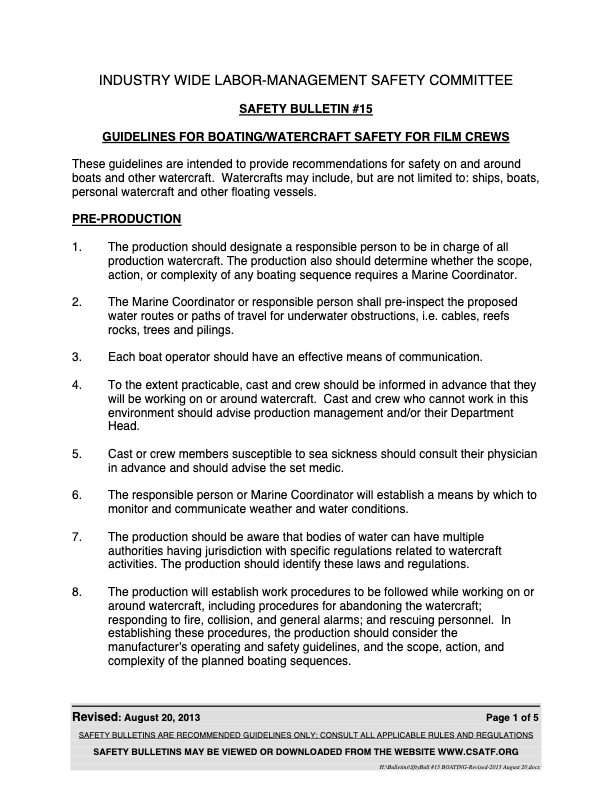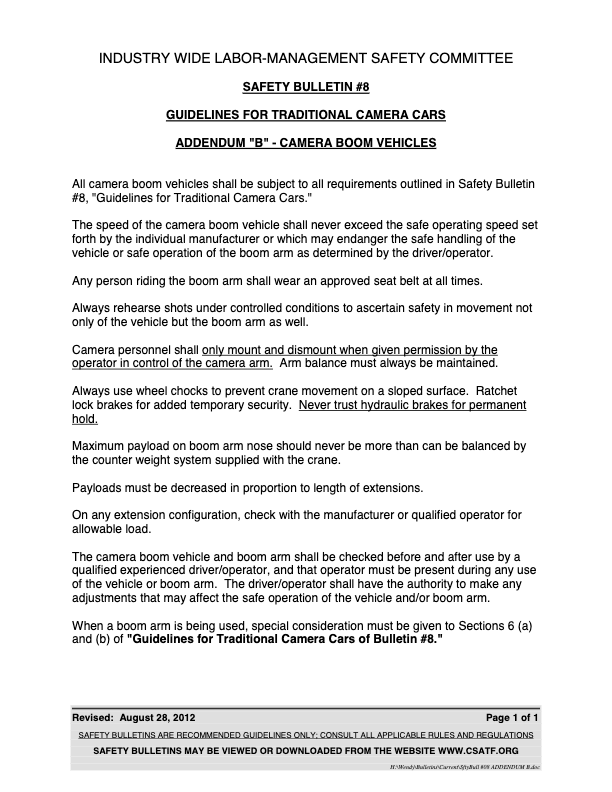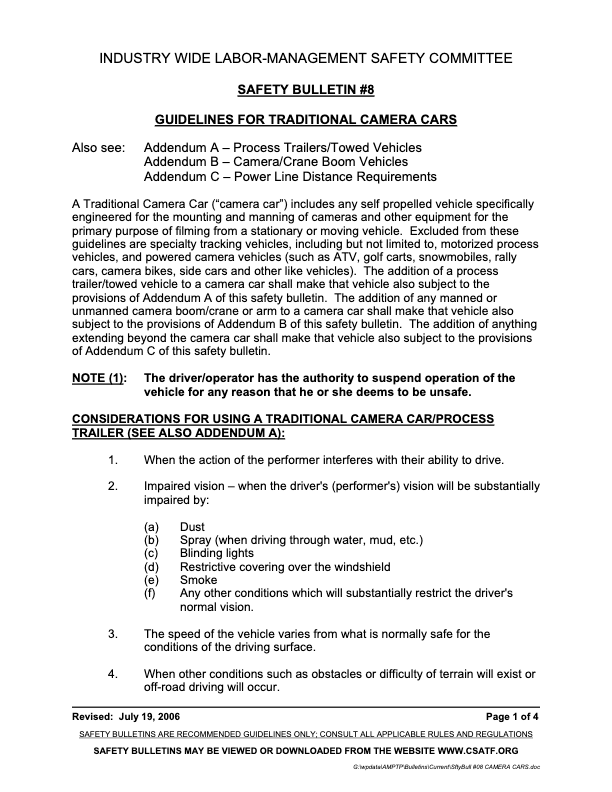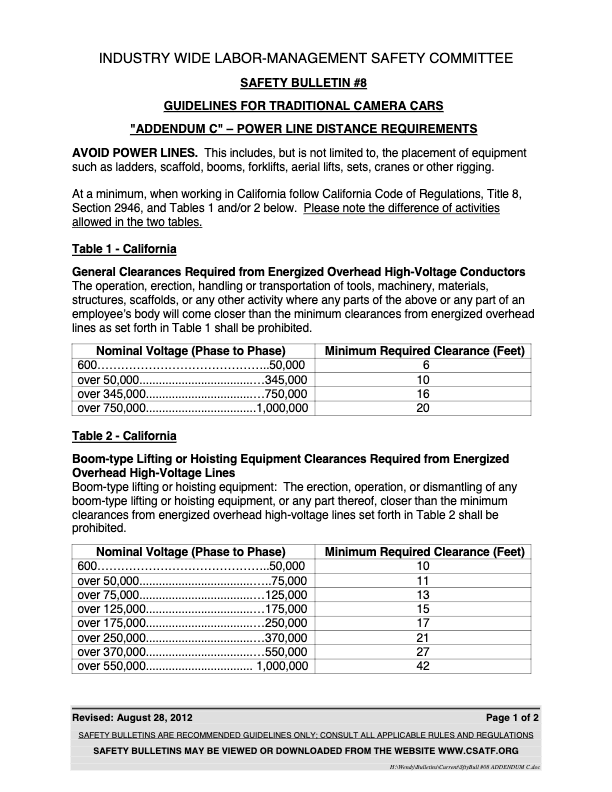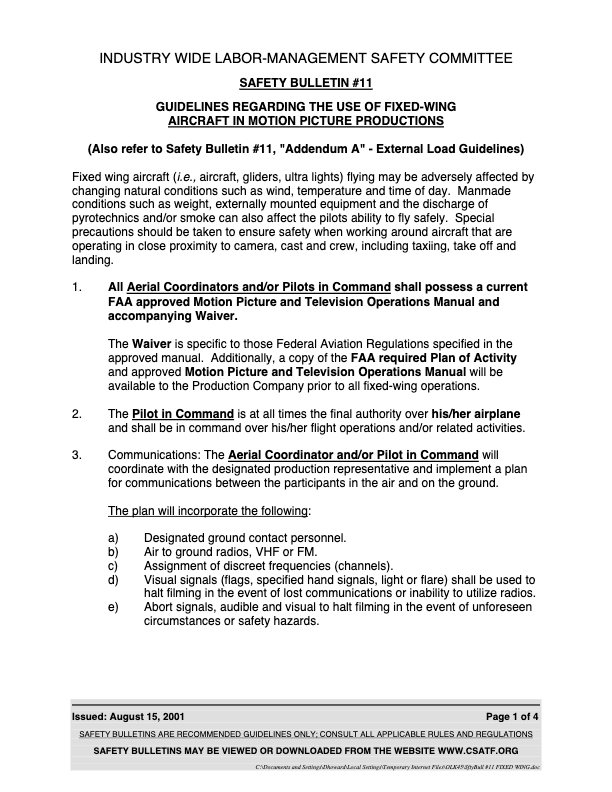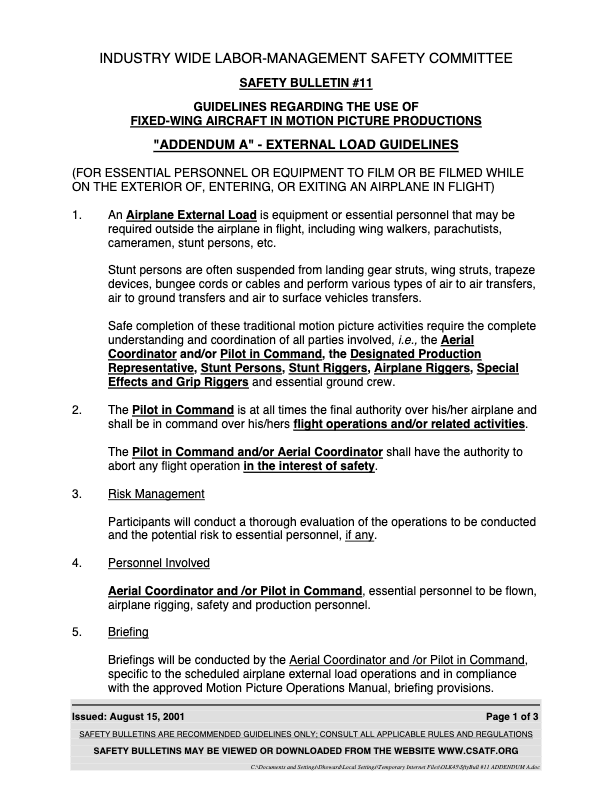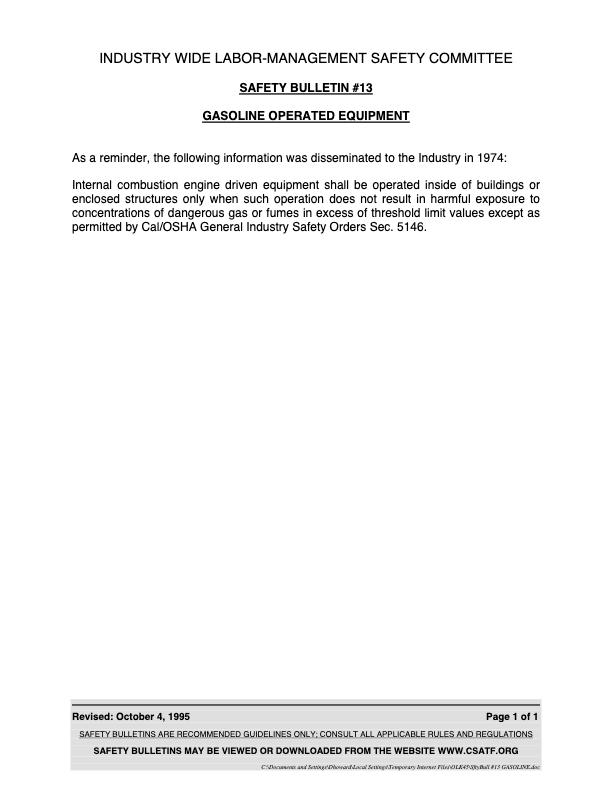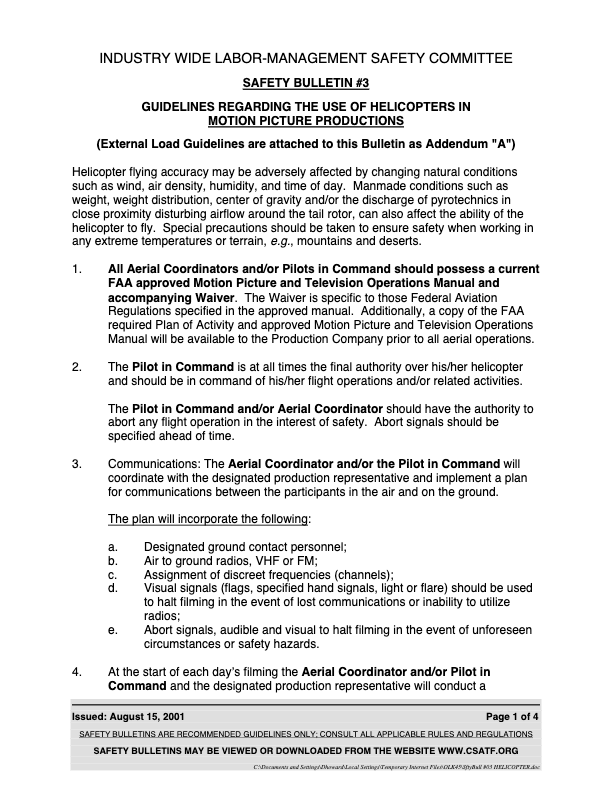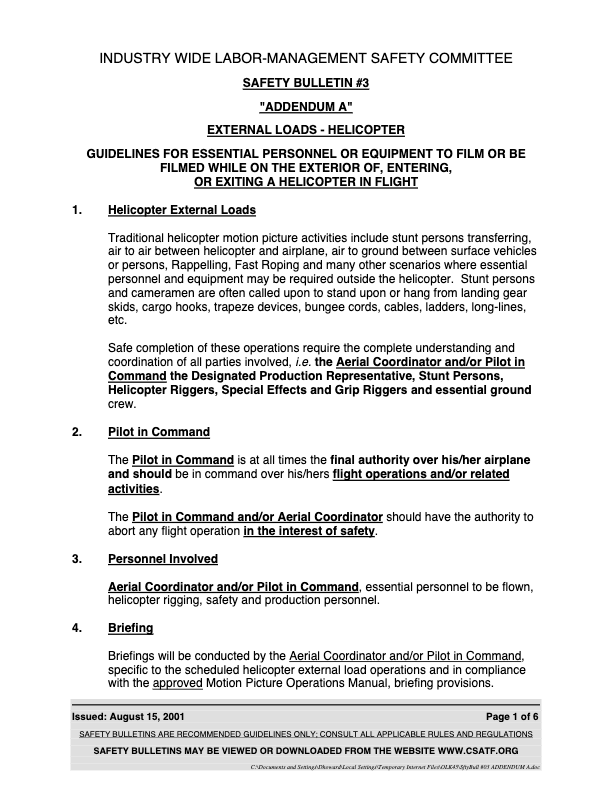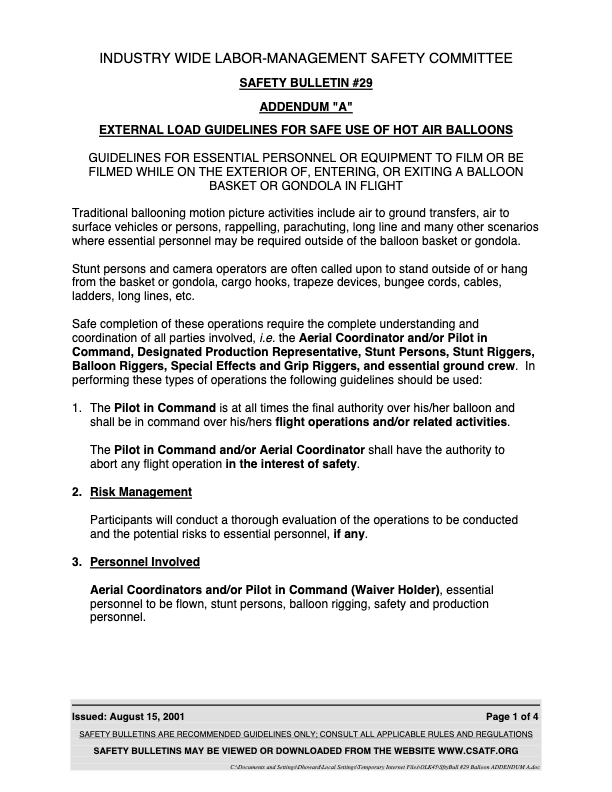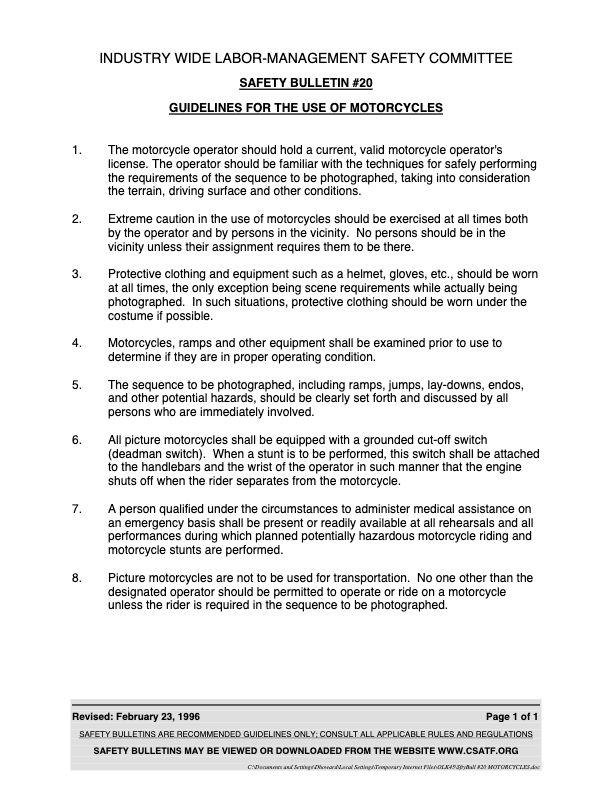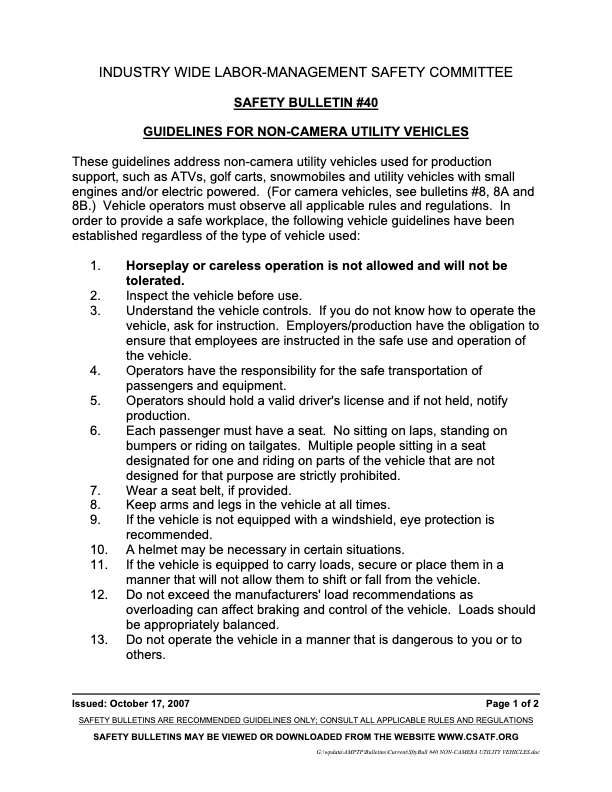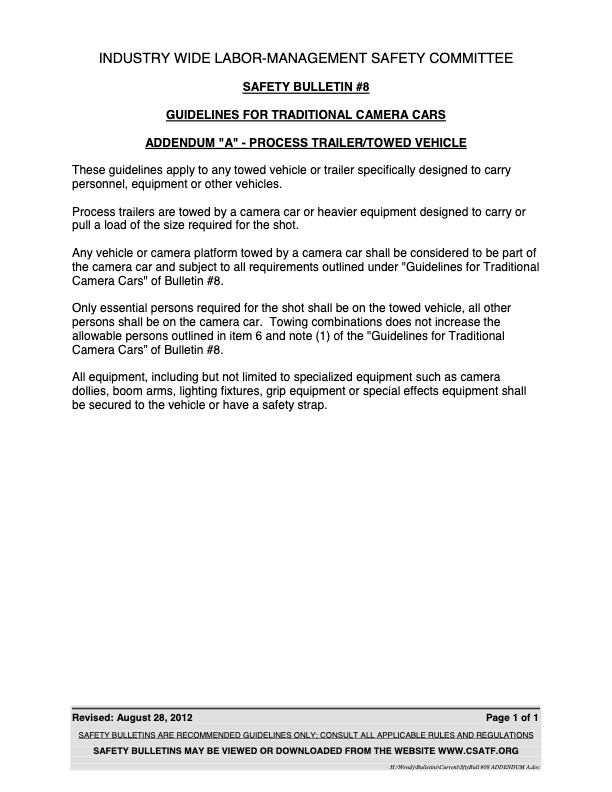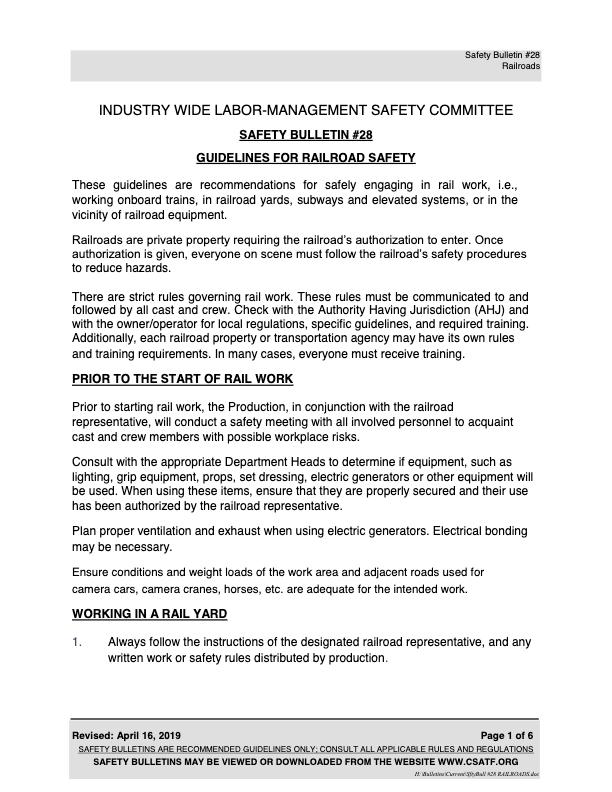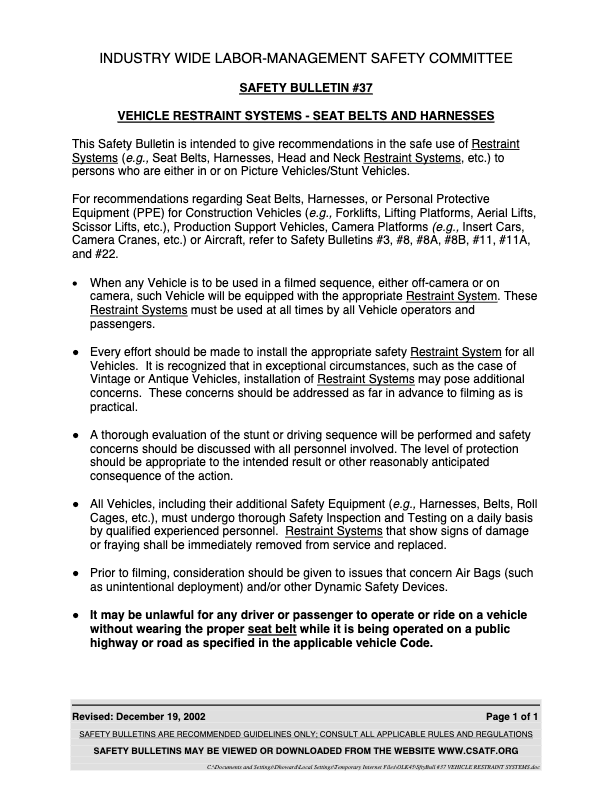Safety Bulletin
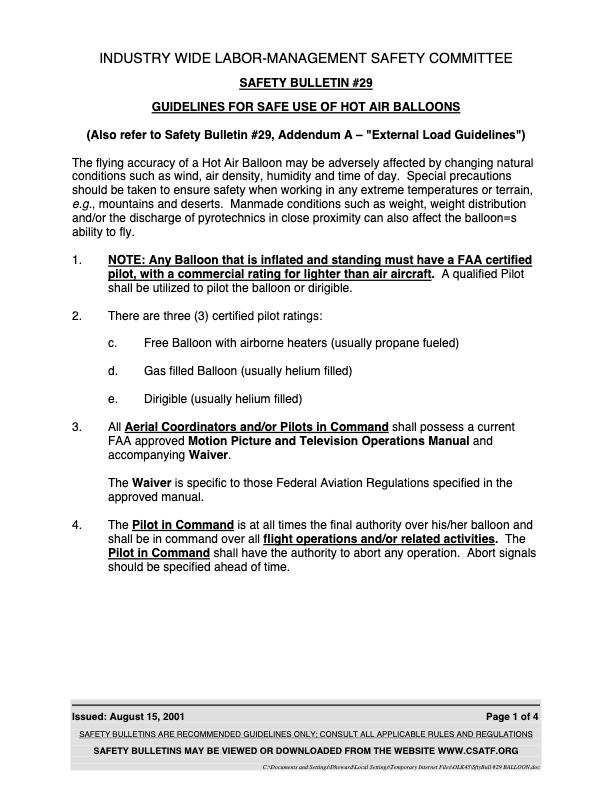
Guidelines
The flying accuracy of a Hot Air Balloon may be adversely affected by changing natural conditions such as wind, air density, humidity and time of day. Special precautions should be taken to ensure safety when working in any extreme temperatures or terrain, e.g., mountains and deserts. Manmade conditions such as weight, weight distribution and/or the discharge of pyrotechnics in close proximity can also affect the balloon’s ability to fly.
- Any Balloon that is inflated and standing must have a FAA certified pilot, with a commercial rating for lighter than air aircraft. A qualified Pilot shall be utilized to pilot the balloon or dirigible.
- There are three (3) certified pilot ratings:
- Free Balloon with airborne heaters (usually propane fueled)
- Gas filled Balloon (usually helium filled)
- Dirigible (usually helium filled)
- All Aerial Coordinators and/or Pilots in Command shall possess a current FAA approved Motion Picture and Television Operations Manual and accompanying Waiver. The Waiver is specific to those Federal Aviation Regulations specified in the approved manual.
- The Pilot in Command is at all times the final authority over his/her balloon and shall be in command over all flight operations and/or related activities. The Pilot in Command shall have the authority to abort any operation. Abort signals should be specified ahead of time.
- Communications: The Aerial Coordinator and/or Pilot in Command will coordinate with the designated production representative and implement a plan for communications between the participants in the air and on the ground. The plan will incorporate the following:
- Designated ground contact personnel
- Air to ground radios (VHF or FM)
- Assignment of discreet frequencies (channels)
- Visual signals (flags, specified hand signals, or light) shall be used to halt filming in the event of lost communications or inability to utilize radios (note: flares are not to be used in or around a balloon)
- Abort signals, audible and visual to halt filming in the event of unforeseen circumstances or safety hazards
- Prepare plot plans and graphics to locate the intended landing area, intended flight paths, and designated emergency landing sites. Indicate the location and types of special effects.
- MEETING for the production staff for those persons necessary for filming, including emergency, safety and security personnel. Note: A subsequent briefing/SAFETY MEETING may also be required as necessary for an intended action. Both meetings shall include the following:
- Pertinent items and the special provisions of the Aerial Coordinator and/or Pilot in Command along with any additional provisions issued by the local FAA Flight Standards District Office
- Possible risk to personnel that are involved
- Safeguards to personnel and equipment
- Communications
- Emergency procedures
- Location of boundaries
- Local governmental limitations or restrictions (if any)
- The Aerial Coordinator and/or Pilot in Command shall designate one person as the Ground safety contact with no other responsibilities. The Balloon Crew Chief may be designated as the ground safety contact around the balloon, if qualified.
- A preplanned stunt and/or special effect sequence, if any, will not be changed in any way once the Balloon has been launched. If there is a question as to safety of any aerial filming sequence involving low, over-the-camera shots, a briefing/safety meeting shall be held between the Aerial Coordinator and/or Pilot in Command and concerned persons as to whether the use of a locked-off camera is necessary.
- Allow only personnel essential to the filming of the balloon to be in the area. All other personnel shall remain at least 50 feet away from the balloon.
- No smoking is allowed within 100 feet of the balloon or any of its components, which includes the propane storage area.
- There shall be a designated and approved area for the storage of propane fuel tanks (usually with or at the support vehicle location).
- Check on predicted weather conditions in the areas of the launch site, flight paths, and landing site. Provide as much advance notice as possible to the Aerial Coordinator and/or Pilot in Command regarding any weather problems such as high winds, rain or lightning. Sudden changes in any of the above may require that the flight be delayed or canceled.
- Balloon support equipment is very important as parts are easily damaged while on the ground. Do not step on any part of the balloon or tether ropes.
- Keep all sharp objects, heat sources or open flames and non-essential equipment at least 100 feet from the balloon.
- If a foreign object(s) falls into, on or against any part of the Balloon or rigging, report it immediately to the Pilot in Command and/or Aerial Coordinator.
- A chase vehicle shall be assigned with no other duty than to support the balloon crew.
- Before any stunt or special effects sequence is to be performed, all persons involved shall be thoroughly briefed as to any potential hazards and safety questions prior to the filming.
- If an emergency occurs, do not touch any part of the balloon. A designated balloon ground crew member will take charge and coordinate rescue operations. Immediately call 911 or the designated emergency number for the area.
- If you are unsure about any part of the balloon operation, ask the Pilot in Command and/or Aerial Coordinator.
- The production company must notify all cast and crew members and the front of the studio call sheet shall contain a statement to the effect that: ”An aircraft is being used and will be flown in close proximity to crew and equipment. Anyone objecting will notify the production manager or 1st AD prior to any filming.”


